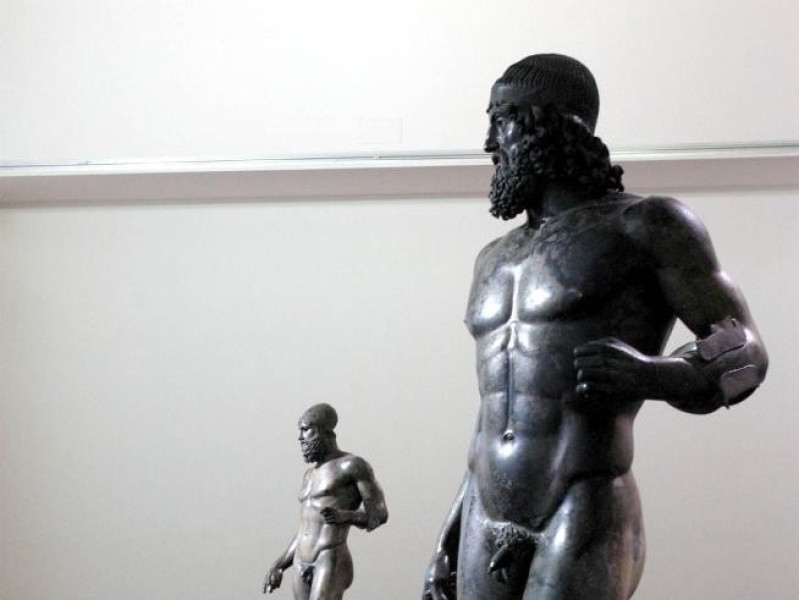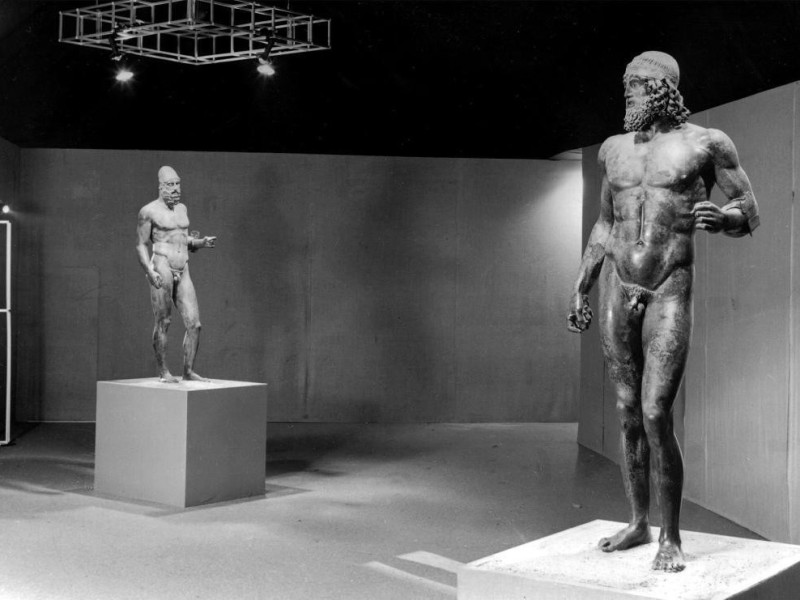Museo Archeologico Nazionale
The National Museum of Reggio Calabria is one of Italy's most prestigious archaeological museums, as it houses many important examples of the colonies of Magna Grecia. The seat that hosts it, Piacentini Palace, overlooking the central De Nava Square, a short distance from the entrance of the "Falcomatà" Seafront. The establishment of the Museum was promoted by Paolo Orsi, the first Superintendent in Calabria, with the intent to unify the objects kept in the Civic Museum with the finds from the numerous excavations conducted throughout the territory of Calabria. Opened in 1959, the Museum has been, over the years, the transformation of big capacity: 1981 have been set up the "Underwater Archaeology" Section, required to give adequate visibility to the famous Riace Bronzes, found in 1972, and the section dedicated to the "Colonies of Magna Grecia". Currently the Museum is undergoing redevelopment. In the previous exhibition, there were a "Prehistory" Section, which aims to reconstruct the history of Calabria by the appearance of the man until the Iron Age; an extensive area devoted to Locri Epizefiri, one of the largest and most investigated colonies of Magna Grecia; a "Numismatic Section", and a path that affects the main ancient cities (Reggio, Metauros, Medma, Hipponion, Kaulon, Cirò, Laos and Temesa), in addition to exposure of the valuable collection of paintings from the Civic Museum. The Riace Bronze are the highlight of the Museum, in addition to being one of the most important symbols of the region internationally. The statues were found in 1972, in the stretch of sea off Riace Marina, at a depth of 8 m. Classified as "A" and "B", the Bronze represent two naked men height of 1,98 m, armed with shield (shouldered with the left), spear (the right) and helmet. From the static point of view, they have a weighting system to cross-rhythm: the weight of the body rests on the right vertical leg, which is counterbalanced by the left arm; conversely, the left flexed leg corresponds to the right arm lowered to challenge the auction. The powerful muscles is made with strong plastic vigor: among anatomical details, we note the veins of the hands and feet, and the nipples (worked separately and applied by typing hammer).
Info:
Waiting for the new layout, you can visit the ground floor of the Museum, which houses temporary exhibitions and the hall (aseismic and heated) which exhibits the Riace Bronze after the restoration.



